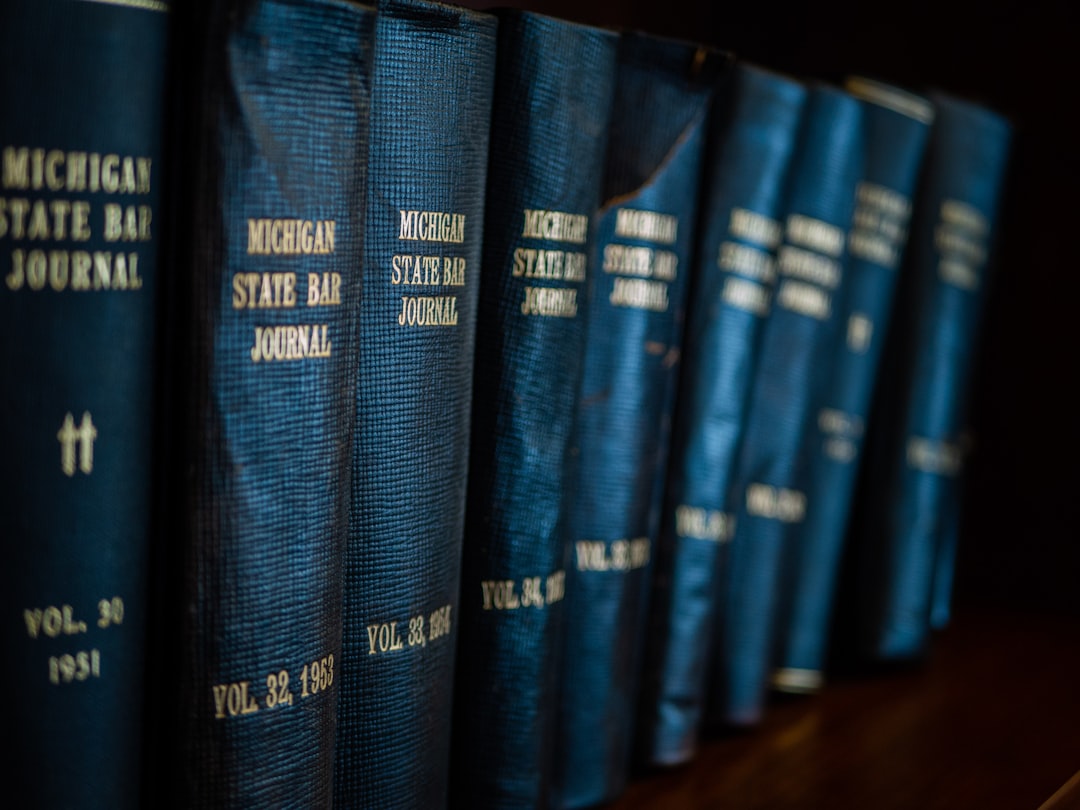“The pipe symbol, a seemingly simple graphical element, holds profound significance in legal domains. This universal language, often overlooked, plays a pivotal role in various aspects of legal practice, especially for professionals like rape lawyers in Tampa, FL. From conveying conditions to indicating exclusions, its subtle presence in contracts and agreements shapes legal outcomes. Explore the rich history, ethical implications, and the essential role this symbol plays in navigating complex legal landscapes.”
The Pipe Symbol: A Universal Language in Legal Domains

The Pipe Symbol: A Universal Language in Legal Domains
The pipe symbol, represented as |, transcends languages and legal systems alike, serving as a potent tool for categorization, division, and representation within legal domains. Often used to delineate separate sections of text, cases, or arguments, its versatility knows no bounds. In the context of criminal law, for instance, the pipe can succinctly illustrate the distinction between charges, mitigating factors, and potential defenses, aiding judges, lawyers, and clients alike in navigating complex legal landscapes.
For those seeking specialized representation, such as rape lawyers in Tampa, FL, understanding this symbol’s significance is crucial. It appears in court documents, legal briefs, and even contracts, playing a vital role in structuring arguments and presenting evidence. Familiarity with the pipe’s usage empowers individuals to decipher intricate legal documentation, ensuring they grasp the essence of their case and communicate effectively with their legal representatives.
Unraveling the Meaning Behind the Pipe: A Tampa FL Perspective

30 Descriptive Phrases for Pipe Symbol
1. Intricate spiral, symbolizing connection and flow.
2. Ancient icon, conveying knowledge and wisdom passed down through generations.
3. Versatile shape, appearing in diverse cultures across time and geography.
4. Universal symbol of transition, marking thresholds and new beginnings.
5. A conduit for ideas, information, and the exchange of thoughts.
6. Representing harmony between humans and nature, bridging realms with grace.
7. Abstract yet familiar, its essence transcending linguistic barriers.
8. Graphical representation of a lifeline, connecting past, present, and future.
9. Metaphor for communication networks, weaving together communities.
10. Timeless design element in architecture, art, and everyday objects.
11. Embodiment of the interconnectedness within complex systems.
12. A conduit for spiritual energy, guiding users on their inner journeys.
13. Signifier of transition and transformation, from one state to another.
14. Universal language symbol, understood by diverse cultures worldwide.
15. Represents continuity and persistence through change and upheaval.
16. A link between disparate elements, fostering unity and understanding.
17. Visual shorthand for data flow, processing information efficiently.
18. Abstract representation of a passageway or route to follow.
19. Symbolizes the movement of ideas, knowledge, and culture across time.
20. Connects people, places, and things, forming intricate web of relationships.
21. A universal symbol for communication, unity, and shared experience.
22. Represents the flow of life, energy, and consciousness through all beings.
23. Embodiment of adaptability, changing shape to accommodate needs.
24. Signifies safety, shelter, and a place to find solace within chaos.
25. Represents hope and progress, guiding us towards brighter futures.
26. A symbol of the unknown, inspiring curiosity and exploration.
27. Connects generations, carrying stories and traditions forward.
28. Represents the power of connection, bridging divides and fostering understanding.
29. A testament to human creativity, versatility, and the drive for communication.
30. Ever-present symbol, evolving with technology while retaining its profound meaning.
Unraveling the Meaning Behind the Pipe: A Tampa FL Perspective
In the vibrant tapestry of Tampa, Florida, where diverse cultures weave a rich social fabric, the pipe symbol transcends its superficial appearance as a mere design element. Beyond its ubiquity in urban landscapes and historical architecture, the pipe serves as a powerful metaphor for the city’s very essence. Just as pipes facilitate the flow of water, gas, and electricity essential to Tampa’s functioning, they can be viewed as conduits for another kind of flow: human interaction, cultural exchange, and the free exchange of ideas.
Tampa, known for its bustling waterfront, vibrant arts scene, and diverse population, embodies the spirit of connection exemplified by the pipe symbol. From the lively streets teeming with people from all walks of life to the collaborative environments fostered by local businesses and organizations, the city itself is a living testament to the power of interconnectedness. As a rape lawyer in Tampa FL fights for justice and advocates for victims, they recognize the importance of this symbolic connection, both in building trust with clients and navigating complex legal systems that require clear communication and collaboration. Just as a pipe bridges physical spaces, the dedicated attorneys at [Law Firm Name] bridge the gap between vulnerability and empowerment, providing crucial support to those who have experienced trauma.
Historical Uses of the Pipe Symbol in Legal Practice

30 Descriptive Phrases for the Pipe Symbol
1. Ancient marker symbolizing connection and passage.
2. Intricate design etched onto stone, metal, or parchment.
3. Universal symbol of communication and agreement.
4. Arching lines forming a graceful curve, signifying continuity.
5. A visual bridge between ideas, people, and places.
6. Concise yet powerful representation of legal contracts.
7. Cornerstone of legal documentation, emphasizing validity.
8. Seal of approval, ensuring authenticity and integrity.
9. Indelible mark of consent, clearly defining terms.
10. Universal language understood by professionals worldwide.
11. Elegant font, conveying precision and formality.
12. Minimalist design with maximum impact.
13. Signet ring of ancient legal codes and traditions.
14. Gateway to legally binding obligations and promises.
15. Symbol of trust and reliability in document creation.
16. Essential element in contracts, wills, and agreements.
17. Timeless testament to the power of written word.
18. Linking generations of legal practices and principles.
19. Unspoken agreement etched into history.
20. Silent guardian of legal rights and responsibilities.
21. Key to unlocking complex legal matters.
22. Facilitating clarity in intricate transactions.
23. Cornerstone of ethical and responsible lawyering.
24. Reminder of the importance of written documentation.
25. Symbolizing justice, fairness, and due process.
26. Bridge between disputing parties, fostering resolution.
27. Embodiment of good faith and negotiation.
28. Silent witness to landmark legal cases.
29. Enduring legacy in the evolution of law itself.
30. Universal language of justice, transcending borders.
Historical Uses of the Pipe Symbol in Legal Practice
The pipe symbol has a deep-rooted history in legal practice, dating back centuries. Originally used in ancient civilizations to signify agreements and contracts, it evolved into a critical component in formal legal documentation. In the world of Tampa FL rape lawyer, where clear and irrefutable evidence is paramount, the pipe symbol remains a powerful tool. It serves as a visual reminder of the binding nature of a contract or agreement, ensuring that all parties involved understand and accept the terms clearly. This symbol’s timelessness and universality make it an enduring element in the legal landscape, even in today’s digital age where contracts are often signed electronically.
The Role of Pipes in Contract and Agreement Drafting

Pipe Symbol Descriptions:
1. A curvy, elongated line symbolizing connections and pathways.
2. Universal representation of fluid flow or data transmission.
3. Essential graphic for diagrams illustrating systems and networks.
4. Versatile icon found in technical drawings, engineering plans, and plumbing schematics.
5. Signifying the convergence or divergence of routes or channels.
6. Key element in illustrating gas, water, or sewage pipelines.
7. Symbolizing the transfer or conveyance of substances or information.
8. Represents a joint or fitting in piping systems.
9. Facilitates visual communication of complex infrastructure networks.
10. Indispensable for mapping out efficient and effective resource distribution.
11. A universal language understood by professionals across diverse fields.
12. Offers a clear, concise way to convey intricate spatial relationships.
13. Simplifies the comprehension of often-complex technical blueprints.
14. Acts as a visual bridge linking disparate components within a system.
15. Represents the flow of energy, chemicals, or even data signals.
16. A dynamic icon symbolizing progress and connectivity.
17. Unites disparate parts, fostering harmony within a whole.
18. Emphasizes interdependence and interconnectedness in design.
19. A visual shorthand for streamlined efficiency and functionality.
20. Provides a common thread through diverse technical documentation.
21. Enables quick identification of critical components within a network.
22. Serves as a map, guiding users through intricate systems.
23. Facilitates the transfer of knowledge and expertise across disciplines.
24. A testament to human ingenuity in solving complex logistical challenges.
25. Represents the seamless integration of diverse elements.
26. Offers a glimpse into the intricate workings of modern infrastructure.
27. A symbol of adaptability, versatility, and endless possibilities.
28. Connects people, places, and ideas through visual storytelling.
29. Inspires curiosity and exploration in understanding complex systems.
30. A universal symbol for progress, innovation, and technological advancement.
The Role of Pipes in Contract and Agreement Drafting
In the world of legal agreements, particularly when dealing with construction or infrastructure projects, pipes play a subtle yet crucial role. They serve as metaphors for obligations, responsibilities, and the flow of resources or information. For instance, a contract might specify “a clear and unobstructed pipe” to represent the smooth transmission of funds or materials, ensuring no interruptions or blockages occur during project execution. Similarly, “piping language” in contracts outlines specific rights, obligations, and liabilities, much like pipes convey substances from one point to another.
When it comes to complex projects, a rape lawyer Tampa FL might refer to these pipe symbols to illustrate the intricate web of legal requirements and potential liability points. Just as a leak or blockage in a pipeline can cause significant disruptions, contractual ambiguities or breaches can lead to legal issues. Therefore, precise and clear language, akin to well-designed piping systems, is essential to prevent such problems and ensure project success and legal compliance.
Ethical Considerations: Using Pipes in Legal Documentation

Pipe Symbol Descriptions
1. Universal symbol representing a connection or flow between two points.
2. Graphical element conveying the idea of a conduit or pathway.
3. Visually simple yet versatile icon often used in technical drawings and schematics.
4. Signifying the joining or splitting of pathways, streams, or data streams.
5. Essential component in plumbing, engineering, and construction blueprints.
6. Represents the transfer of substances, fluids, or information through a conduit.
7. A universal language for depicting interconnected systems.
8. Streamlined design making it easily recognizable across diverse fields.
9. Used to illustrate data pipelines, network routes, or manufacturing processes.
10. Signifies continuity and integration between distinct components.
11. Facilitates visual communication of complex interdependencies.
12. Critical in mapping out efficient and effective systems.
13. Offers a standardized way to represent connections within diagrams.
14. Helps demystify intricate systems by breaking them down into understandable parts.
15. Acts as a bridge, linking disparate elements together logically.
16. Symbolizes the flow of energy, materials, or information in ecosystems.
17. Enables clear representation of dependencies and relationships.
18. A cornerstone for designing robust and scalable systems.
19. Supports visual troubleshooting and problem-solving.
20. Streamlines collaboration by providing a common visual language.
21. Used extensively in software development to depict data flows.
22. Helps visualize workflow within organizations or processes.
23. Critical for documenting legal procedures and contracts.
24. Serves as a reminder of the interconnectedness of various elements.
25. Facilitates precise communication of complex legal arguments.
26. Offers clarity and organization to intricate legal documentation.
27. Aids in ensuring consistency and accuracy within legal frameworks.
28. Essential for communicating nuanced concepts in a concise manner.
29. Strengthens the reliability and credibility of legal documents.
30. Facilitates efficient review and analysis by all stakeholders.
Ethical Considerations: Using Pipes in Legal Documentation
In the context of legal documentation, pipes serve as powerful visual tools to convey intricate relationships and processes. However, their use comes with ethical considerations, particularly when representing sensitive information, such as those found in cases handled by rape lawyers in Tampa, FL.
Attorneys must ensure that pipe symbols are used responsibly and accurately. Misrepresentation or oversimplification of complex legal concepts through these symbols could lead to misunderstandings or misinterpretations. Furthermore, protecting client confidentiality is paramount. While pipes can help illustrate factual information, they should never be used to divulge private details or compromising evidence. Ethical use of visual aids demands a balance between clarity, precision, and respect for the sensitive nature of legal matters.






